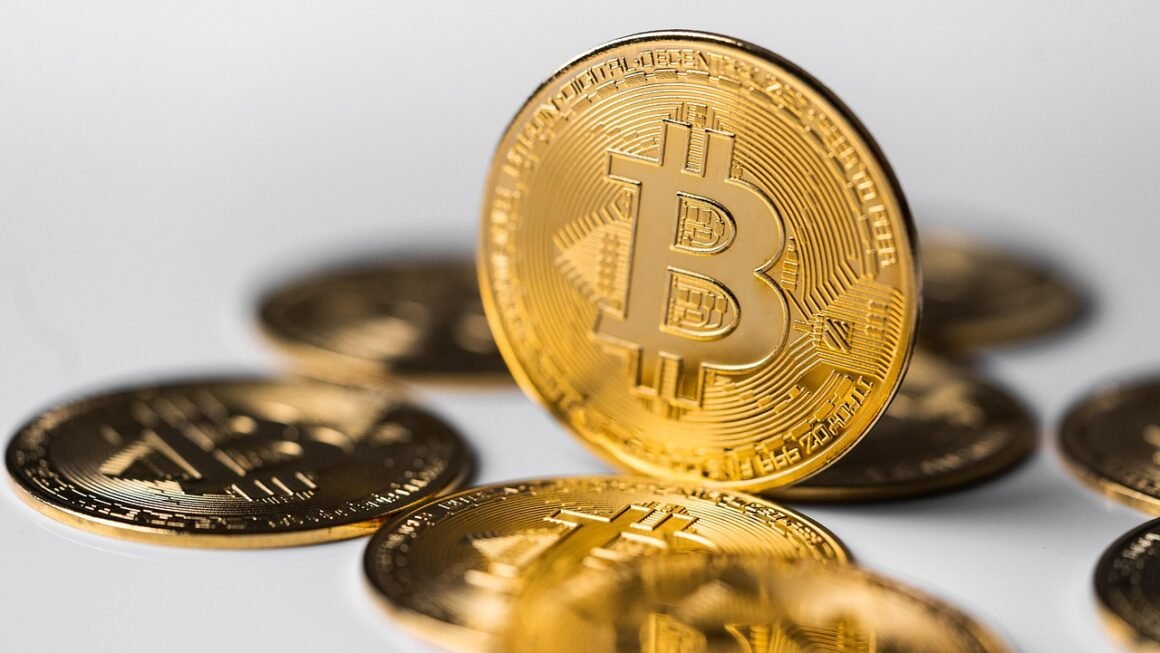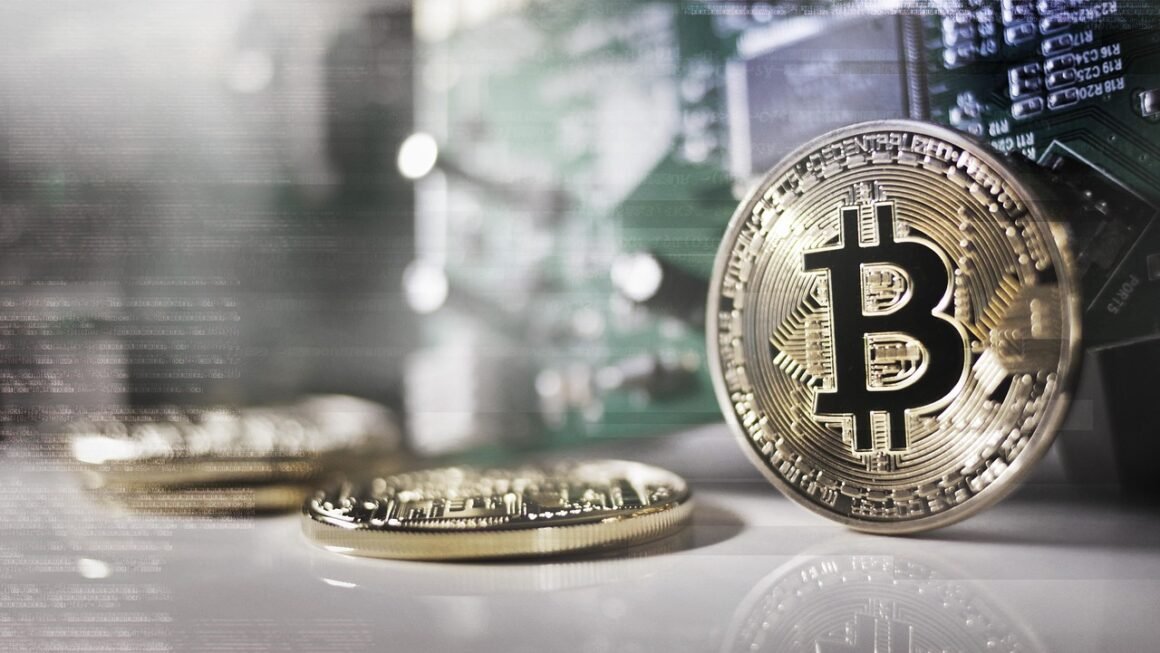Altcoins. The word itself conjures images of moonshots, groundbreaking technologies, and the potential for exponential gains (and sometimes, heartbreaking losses). Beyond Bitcoin, lies a vast and varied ecosystem of alternative cryptocurrencies, each vying for a slice of the digital pie. Understanding altcoins, their purpose, and their potential risks is crucial for anyone navigating the cryptocurrency landscape. This guide delves into the world of altcoins, exploring their types, use cases, and what to consider before investing.
What are Altcoins?
Defining Altcoins
Altcoins, short for “alternative coins,” are any cryptocurrencies other than Bitcoin. They were created to address perceived limitations or offer unique features not found in Bitcoin. Since Bitcoin’s inception, thousands of altcoins have emerged, each with its own blockchain, consensus mechanism, and intended purpose.
- Key Takeaway: Altcoins represent the diverse landscape of cryptocurrencies beyond Bitcoin, offering various features and solutions.
The Purpose of Altcoins
Altcoins aim to improve upon Bitcoin in various ways, including:
- Faster Transaction Speeds: Many altcoins boast faster block times than Bitcoin, leading to quicker transaction confirmations. For example, Litecoin aims for 2.5 minute block times compared to Bitcoin’s 10 minutes.
- Lower Transaction Fees: Some altcoins offer significantly lower transaction fees, making them more attractive for smaller transactions.
- Improved Scalability: Altcoins explore different scaling solutions to handle a larger number of transactions per second.
- Enhanced Privacy: Privacy-focused altcoins like Monero and Zcash use advanced cryptographic techniques to obfuscate transaction details.
- Smart Contract Functionality: Platforms like Ethereum provide smart contract functionality, enabling the creation of decentralized applications (dApps).
- Unique Use Cases: Some altcoins are designed for specific industries or purposes, such as supply chain management, gaming, or social media. Examples include VeChain for supply chain and Decentraland for virtual reality.
- Key Takeaway: Altcoins attempt to solve Bitcoin’s perceived shortcomings by offering faster transactions, lower fees, improved scalability, enhanced privacy, or specialized functionalities.
Types of Altcoins
The altcoin landscape is diverse, with coins categorized based on their underlying technology and purpose.
Mining-Based Altcoins
These altcoins use a Proof-of-Work (PoW) consensus mechanism, similar to Bitcoin, where miners compete to solve complex mathematical problems to validate transactions and earn rewards.
- Examples: Litecoin, Dogecoin, and Bitcoin Cash are mining-based altcoins.
- Considerations: Energy consumption can be a concern with PoW altcoins. The security of the network depends on the amount of computational power securing it.
Staking-Based Altcoins
Staking-based altcoins utilize a Proof-of-Stake (PoS) consensus mechanism. Instead of mining, users “stake” their coins to validate transactions and earn rewards.
- Examples: Cardano, Solana, and Polkadot are examples of PoS cryptocurrencies.
- Benefits: PoS is often more energy-efficient than PoW and allows users to earn passive income by participating in network validation.
Stablecoins
Stablecoins are cryptocurrencies designed to maintain a stable value, typically pegged to a fiat currency like the US dollar or another asset like gold.
- Examples: Tether (USDT), USD Coin (USDC), and Dai (DAI) are popular stablecoins.
- Use Cases: Stablecoins are used for trading, remittances, and as a store of value in volatile markets.
Utility Tokens
Utility tokens provide access to specific products or services within a blockchain-based ecosystem.
- Examples: Basic Attention Token (BAT) for Brave browser, Chainlink (LINK) for accessing real-world data.
- Value Proposition: The value of a utility token is tied to the demand for the services it unlocks.
Governance Tokens
Governance tokens allow holders to participate in the decision-making process of a blockchain project.
- Examples: Maker (MKR) for the MakerDAO ecosystem, Compound (COMP) for the Compound protocol.
- Implication: Holders can vote on proposals and influence the development and direction of the project.
- Key Takeaway: Altcoins can be categorized based on their consensus mechanism (PoW, PoS), value stability (stablecoins), or utility within a specific platform (utility and governance tokens).
Evaluating Altcoins: Key Considerations
Before investing in any altcoin, thorough research is essential to assess its potential and risks.
Understanding the Project
- Whitepaper Review: Read the project’s whitepaper to understand its goals, technology, and roadmap. Does the project solve a real problem? Is the proposed solution viable?
- Team Assessment: Research the team behind the project. Do they have the experience and expertise to execute the project successfully? Check their LinkedIn profiles and look for credible sources.
- Technology and Innovation: Evaluate the underlying technology. Is it truly innovative and disruptive, or is it simply a copycat project? Look for unique features or improvements over existing solutions.
Analyzing Market Sentiment and Community
- Market Capitalization and Volume: Consider the market capitalization and trading volume. A higher market cap and volume generally indicate greater liquidity and stability, but isn’t a guarantee of success.
- Community Engagement: Assess the project’s community. Is there active discussion and support on forums, social media, and other channels? A strong and engaged community can be a positive sign.
- Social Media Presence: Analyze the project’s social media presence. Is the project transparent and responsive to community concerns?
Assessing Risks and Security
- Security Audits: Check if the project has undergone security audits by reputable firms. Audits can help identify and address potential vulnerabilities.
- Regulatory Compliance: Be aware of the regulatory landscape surrounding cryptocurrencies. Regulations can vary by jurisdiction and can impact the viability of a project.
- Liquidity: Ensure that the altcoin is liquid and available on reputable exchanges. Low liquidity can make it difficult to buy or sell without significantly impacting the price.
- Key Takeaway: Due diligence is paramount when evaluating altcoins. Thoroughly research the project, team, technology, market sentiment, and potential risks before investing.
Risks Associated with Altcoins
Investing in altcoins comes with inherent risks that investors should be aware of.
Volatility
Altcoins are generally more volatile than Bitcoin, meaning their prices can fluctuate significantly in short periods.
- Example: A sudden announcement or news event can cause the price of an altcoin to surge or plummet drastically.
- Mitigation: Manage risk by diversifying your portfolio, investing only what you can afford to lose, and setting stop-loss orders.
Liquidity Issues
Some altcoins have low trading volume, making it difficult to buy or sell large amounts without affecting the price.
- Challenge: This can lead to difficulty exiting a position quickly if the market turns against you.
- Strategy: Focus on altcoins with sufficient liquidity to ensure you can easily buy and sell them.
Scam Projects and “Pump and Dumps”
The cryptocurrency space is susceptible to scams and “pump and dump” schemes, where groups artificially inflate the price of an altcoin and then sell their holdings for a profit, leaving other investors with losses.
- Red Flags: Be wary of projects that promise unrealistic returns, lack transparency, or have a team with no verifiable experience.
- Protection: Conduct thorough research and avoid investing in projects that seem too good to be true.
Regulatory Uncertainty
The regulatory landscape surrounding cryptocurrencies is constantly evolving, and changes in regulations could negatively impact the value or viability of altcoins.
- Impact: Regulations could restrict the use of certain altcoins or make it more difficult to access them.
- Stay Informed: Stay informed about regulatory developments in your jurisdiction and globally.
- Key Takeaway: Investing in altcoins carries significant risks, including volatility, liquidity issues, scams, and regulatory uncertainty. Exercise caution and manage your risk accordingly.
Practical Tips for Altcoin Investing
Investing in altcoins requires a strategic approach and a commitment to ongoing learning.
Diversification
Don’t put all your eggs in one basket. Diversify your portfolio across different altcoins and asset classes to reduce risk.
- Strategy: Allocate a smaller percentage of your portfolio to higher-risk altcoins and a larger percentage to more established cryptocurrencies or traditional assets.
Dollar-Cost Averaging (DCA)
DCA involves investing a fixed amount of money at regular intervals, regardless of the price.
- Benefit: DCA can help mitigate the impact of volatility by averaging out your purchase price over time.
- Example: Invest $100 in an altcoin every week or month, regardless of its price.
Research and Due Diligence
Continuously research and stay informed about the latest developments in the cryptocurrency space.
- Resources: Follow reputable news sources, industry analysts, and project updates to stay abreast of the latest trends and potential risks.
- Community Engagement: Actively participate in relevant online communities to learn from others and share your insights.
Secure Storage
Protect your altcoins by storing them in a secure wallet.
- Options: Hardware wallets (e.g., Ledger, Trezor) are generally considered the most secure option, as they store your private keys offline. Software wallets (e.g., MetaMask, Trust Wallet) offer convenience but are more vulnerable to hacking if your device is compromised.
- Best Practices: Enable two-factor authentication (2FA) on all your accounts and keep your private keys safe and secure.
- Key Takeaway: Implement practical strategies such as diversification, DCA, ongoing research, and secure storage to enhance your altcoin investing experience and mitigate potential risks.
Conclusion
The world of altcoins offers a wealth of opportunities for innovation and investment. However, it’s also fraught with risks that require careful consideration. By understanding the different types of altcoins, conducting thorough research, assessing potential risks, and implementing sound investment strategies, you can navigate the altcoin landscape with greater confidence. Remember that investing in altcoins is inherently risky, and it’s essential to invest only what you can afford to lose and to continuously educate yourself about the evolving cryptocurrency landscape. Good luck and invest responsibly!



